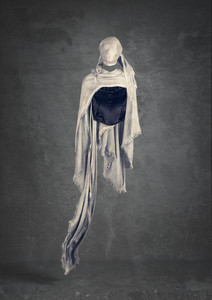Interview with Kirsteen Titchener - #IWD2020
- Jacob Brandon
- Mar 9, 2020
- 3 min read
Updated: Jul 20, 2020
To find out more about our interviews for #IWD2020 head to art-hub.co.uk/post/international-women-s-day-interviews
Kirsteen Titchener is a psychologist turned photographic artist whose detailed and illusion filled work often focuses on the floral as well as the female form, though her work would not be immediately described as feminine. Having chosen psychology as a career path in her twenties she pursued a traditional academic route and whilst this is a career she left behind upon returning to the UK from Australia, it is still an area that fascinates her and finds a creative outlet through her work.
Of this background Kirsteen says, “I didn’t grow up wanting to be a psychologist, a photographer or an artist and would never have guessed I’d end up as any of these things. However, I did grow up believing, from those who had shaped my thoughts during my formative years, that being an artist wasn’t a real job. In the 80’s being a hairdresser, estate agent or nurse were considered suitable careers for girls.”
We asked Kirsteen where the line is between gender being incorporated into her work rather than influencing it, and whether it’s an interpretation that audiences attach to her work.
There are definitely some gender related issues in my work, but my work has never set out to be about gender, it is just inherent in the work. This is particularly noticeable because the images in the Missing Series are all based around the female form. This is not to make a statement about women per se but because they are, for the purposes of the Missing Series at least, instantly recognisable as figures when draped in fabrics. The deeper issues in the series, such as the passing of time, are equally relevant to everyone.
I don’t feel any obligation or particular desire to discuss gender or gender issues in my work. Interestingly when talking about my work with collectors and visitors to exhibitions it is an issue that rarely comes up despite the strong female form in the work. Occasionally people ask if I’ve considered using male figures but other than that it’s a rare comment that touches on gender.
Do you think you have faced barriers as a female artist that you wouldn’t have otherwise?
Not that I am aware of. I am not formally educated as an artist and I am carving out my own path into the artworld. I don’t know if things would have been different if I had taken a more academic journey to becoming an artist.
Where do you see important contributions to conversations around gender being made?
Anyone striving to ensure women are equally placed in society and encouraging serious discussion around gender are people who I admire very much. It is something I am aware of in my everyday life by virtue of being a woman and having traversed my working life (both as a psychologist and an artist) from that mould. I am also passionate about things like voting to make sure that campaigns fought by women in decades past are treasured.
I enjoyed seeing the Royal Photographic Society’s 100 Heroines campaign across social media to celebrate women in photography today. I’m a member of SheClicks which also supports female photographers. However, I’m cautious about setting myself, as a female photographer and artist, as any different to male photographers. While I see a need for such groups at the moment to support women in photography (because they are seriously underrepresented within the profession) I am cautious because I don’t want female artists or photographers to be seen or regarded as any different to men. I don’t feel it should be relevant to my work who made it.
Do you celebrate international women´s day in any special way?
I’ve been aware of it for a while and usually post something on my social media accounts each year on IWD but it is not a large focus for me. I think gender issues are something that filter through my life on a more day to day basis. That said I welcome it as a day for global discussion about the multitude of issues it can promote.





























Comments